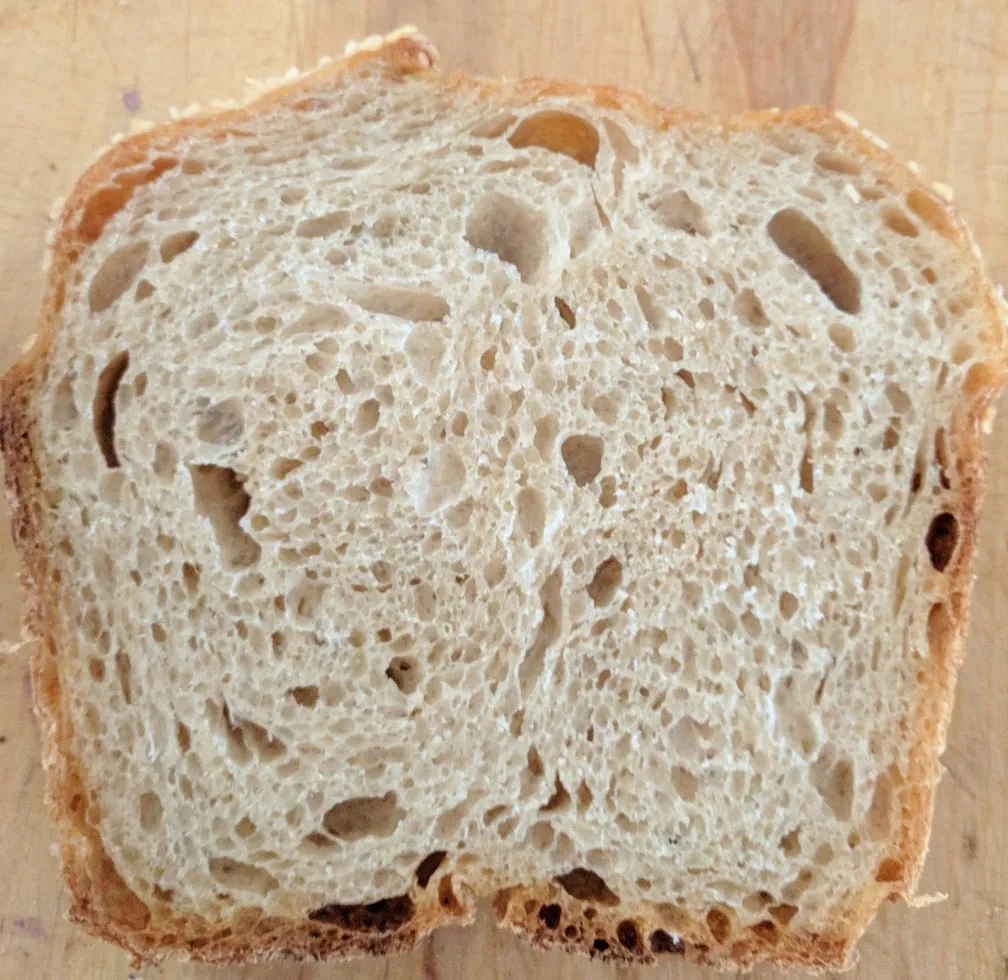
It's been a couple of weeks since I was struggling to get a feel for sourdough after years of only using commercial yeast. Thought I'd post an update on my daily bread that I've really been enjoying.
I eat a lot of sandwiches :) so I've been baking in a bread tin with a second bread tin inverted to hold the steam. This is a 1-2-3 with a little extra water added and makes a very small loaf that is perfect for me
100 grams ripe starter
210 grams filtered water
150 grams fresh ground Hard White Wheat
150 grams AP
7 grams salt
I mix the flour, water and salt for a minute or less - just enough to get the flour damp. Cover and let it sit for an hour or two. Add the starter and knead for 3 minutes (ankarsrum) wait 30 minutes - stretch/fold - 30 minutes - stretch/fold -30 minutes - stretch/fold - 30 minutes - shape and into the loaf tin and cover with a second tin upside down.
From here on it's all up to how cold my kitchen is - it's been running around 45-50F at night so I might just let it sit on the counter overnight - or I might put an ice pack on it while it's on the counter - or I might put it in the fridge. But I usually get another 10-16 hours before it's ready to go in the oven.
Once the oven is up to heat (450F), I brush the top with eggwhite wash and sprinkle sesame seeds and give it one long slash. Spray it with water and cover again with the inverted bread tin -- bake it 20 minutes covered at 450 then uncover, rotate and reduce to 425 for 20 minutes.

Good tip with the tins. Love the bread. What was the temperature for the bulk ?
I'm still learning all the terms used here. Is "bulk" the time I'm doing the stretch and folds?
My kitchen was probably 60F during the day so all the time in the mixer (the initial mix and autolyse and the 3 minute knead) was done at 60F room temp (but that'll vary by the day as I don't heat my place). Then I used my oven with light on at 80F for the time between stretch and folds.
I use 8"x4" tins for this small loaf - it's risen to the top of the pan when I put it in the oven and then springs up another inch or so above the pan while it's in the oven.
I whip up something on those lines often for my guy.
I use "bulk" as meaning: all the fermenting time from the yeast entering the main dough to the shaping for the final rise or proof (prove.) After the final rise... bake the little beasties to death! The bulk can include many rises, de-gassings, folding and adding additional ingredients. It does not include the fermenting time on a pre-ferment or a fermented dough entering the recipe as an ingredient. A line is drawn after the dough enters final proof. That's how I understand it.
Now should that final proof, over-proof, deflates and gets a reshape, then the bulk time would then be longer and the proofing time most likely shorter for that bake.
The additions of preferments in a dough recipe usually shorten the bulk ferment. Sometimes it can be eliminated if the preferment is large enough or the type of yeast is fast acting. (Yup, there are doughs that go from mixing and kneading straight into shaping! <--- I'm into long ferments so you won't catch me using this powerful sheet stuff.)
:) Mini